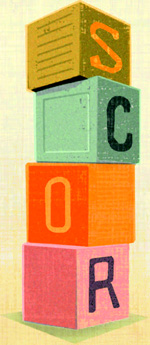Make The activities necessary for production, testing, packaging, and preparation for delivery, including intensive measures for quality and productivity.
Though both Big C Lumber and Raymond Building Supply incorporate manufacturing capabilities into their operations (as more than half of the largest lumberyards do for prehung doors and trusses, according to the 2006 PROSALES 100 Annual Survey of Leading Construction Suppliers), the focus for LBM dealers at the Make step of the SCOR-model process is on inventory management. “There’s a direct correlation between inventory management and inventory assessment expense,” says Kellick-Grubbs. “Those who aren’t disciplined have higher costs.”
Of course, there’s some crossover with the Source step when it comes to managing inventory, specifically what dealers can rely upon from their vendors in terms of timely and complete deliveries. But it’s in the yard where the rubber meets the road. “Our goal is to be like other industries who have figured out what it means to be ‘in stock,’” says MacKay. “The key is to figure out who you’re going to be, what you’re going to sell, and stock it.”
Dealers use a variety of human and electronic means to get accurate inventory counts. Vassar Building Center, for instance, recently hired a dedicated manager (a former builder) to oversee that process, including how returns and damage impact true inventory. Both Big C Lumber and Raymond Building Supply require location or inventory managers to provide min-max estimates to their respective corporate purchasing departments, which are evaluated and, if necessary, challenged to confirm their accuracy based on past inventory requests.
It’s also a process that requires accurate and timely input from the sales force. “We require our salespeople to be good planners and schedulers,” says Babb.
That aligns with Kellick-Grubbs’ assessment that, in addition to a disciplined, perhaps daily process of inventory counting, the workforce must be engaged. “Everyone should be aware of proper [materials] handling procedures to reduce damage, and of letting someone know in purchasing if something is getting low,” she says, as a check-and-balance against what’s listed in the computer system. “They have to understand the correlation between what they see and count, communicating it, and the bottom line.”
And while she sees value in bar coding and other electronic inventory management and data transfer mechanisms, ideally along the supply chain, Kellick-Grubbs says they are no substitute for running a tight ship. “Bar coding can help reduce inventory loss and costs, but it’s not the only answer,” she says. “If you have a disciplined team, you can achieve the same result.”



